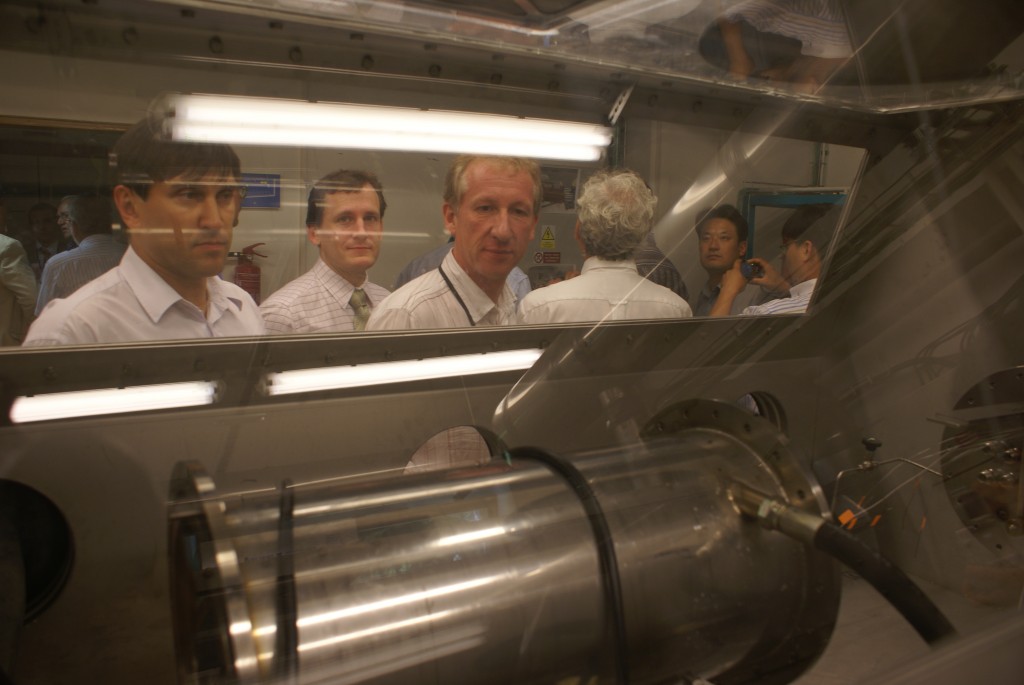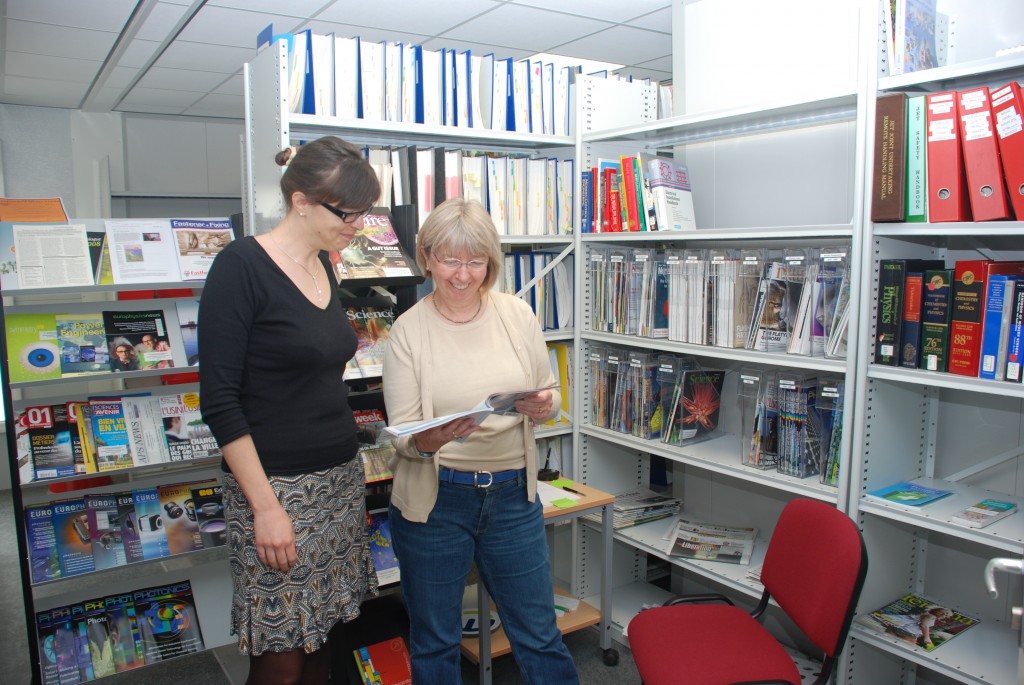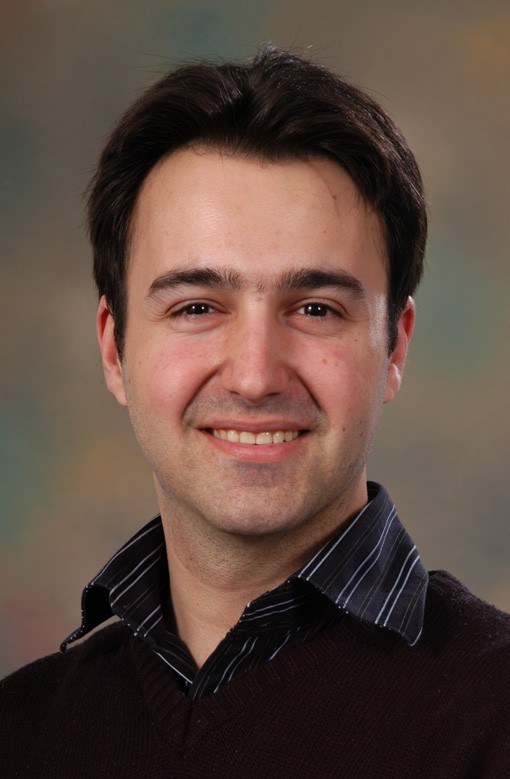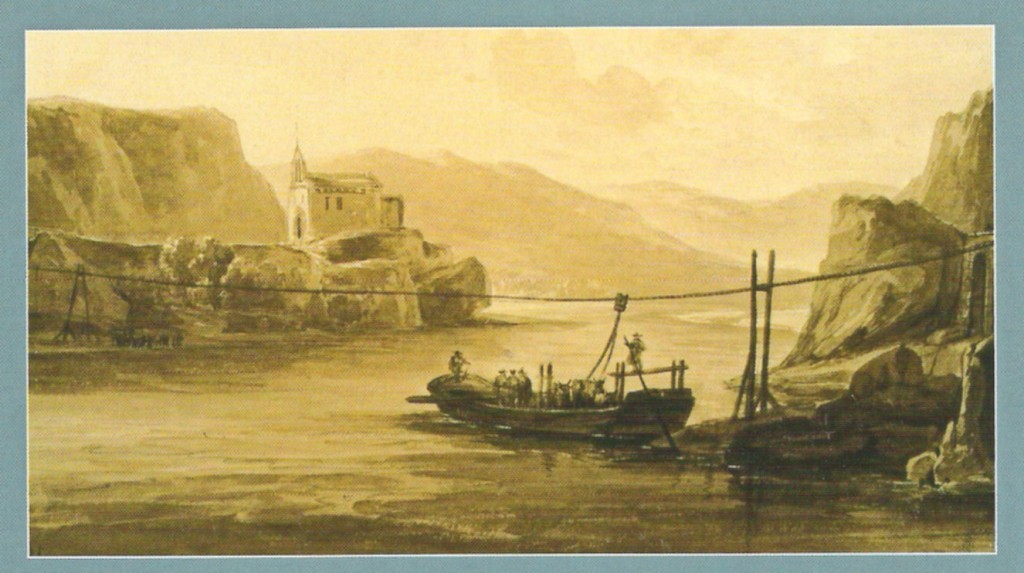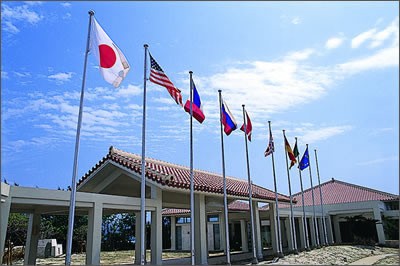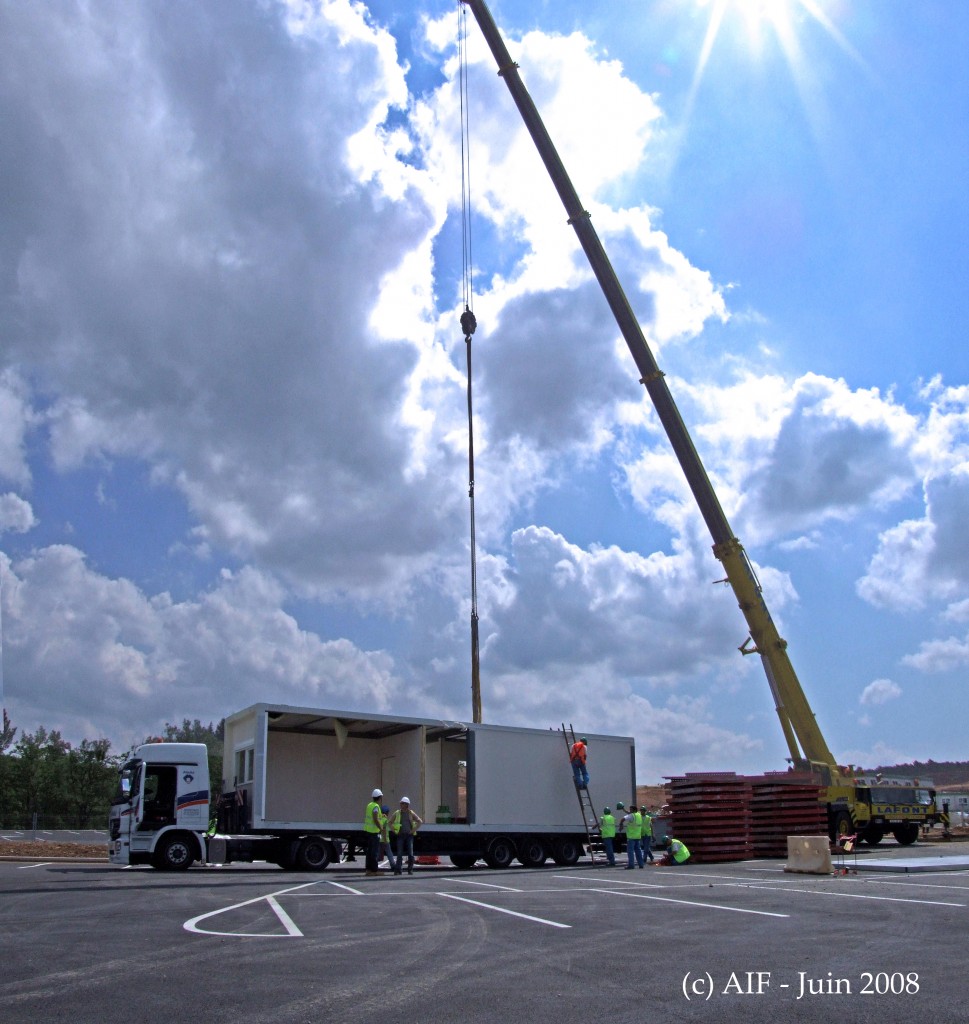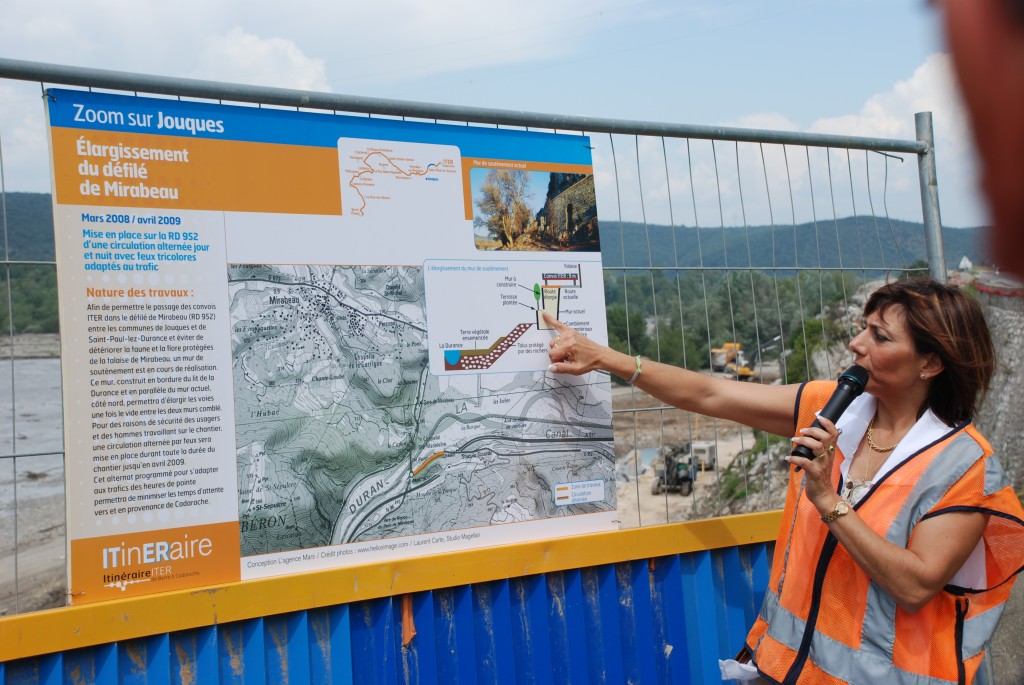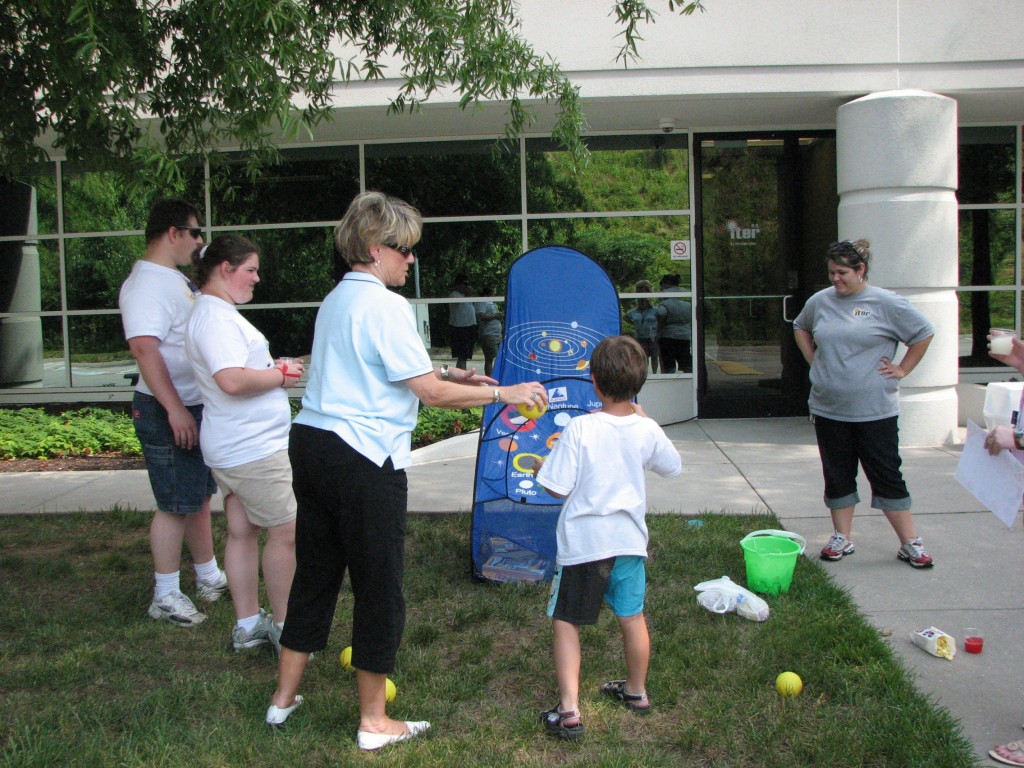From 3-6 June, the ITER Blanket Progress Meeting took place in Prague, Czech Republic. The meeting represents an important milestone towards the realization of the agreed roadmap towards the design and procurement of the ITER blanket.
The ITER blanket, consisting of 440 individual modules, each measuring 2 by 1,5 meters and weighing up to 4.5 tons, is one of the most critical and technically-challenging components in ITER: Together with the divertor it directly faces the hot plasma. Its objective is to maintain a clean plasma during operation whilst shielding the vacuum vessel and superconducting coils from excessive heat and neutron fluxes.
Six of the seven ITER parties requested to be involved in the ITER blanket procurement as they consider it to be an essential technology which is important for the next steps towards fusion energy. "Because of the critical nature of this component, the ITER blanket (as well as the divertor and the superconducting materials for the coils) is one of three procurement packages for which the parties must 'qualify' prior to being allocated the procurement package," explains Michael Pick, Division Head of the ITER In-Vessel Components.
For the "qualification," each Domestic Agency must demonstrate, well in advance of the assumed start of the procurement, its technical capability to carry out the procurement with the required quality, and in an efficient and timely manner. This is achieved through the manufacturing and testing of specific mock-ups and/or prototypes according to a previously defined "Pre-qualification Program" which includes detailed specifications, schedules and acceptance criteria.
The heat flux and fatigue tests are carried out in the US and in the EU; the electron beam facility in Sandia National Laboratories in Albuquerque, New Mexiko, USA, the EU fatigue tests are done in the recently completed thermal radiation facility BESTH near Prague, Czech Republic, and the EU high heat flux tests will be carried out at the electron beam facility JUDITH in Jülich, Germany. The tests have begun at Sandia on two mock-ups, one from the EU and one from the US, with the aim to reach 12 000 cycles at 0.875 MW/m2. At the moment more than 7000 cycles have been successfully completed. Tests at the BESTH are just about to begin where the aim is to reach 12 000 cycles at 0.625 MW/m2.
A second set of tests are planned during which similar tests will be carried out on semi-prototypes. These are full scale (but not full size) components which will incorporate all the main technologies required for the manufacturing of the modules.
After the ITER Design Review it was decided to re-visit the ITER blanket design in-order to improve the power handling capabilities and some of the remote handling aspects of the cooling water attachment. Also, the possibility to use the blanket modules to start-up and shut-down the plasma was to be investigated. "If it turned out that this were indeed feasible, it would contribute to a simplification of the design and to cost savings," says Michael Pick.
Due to the lack of design resources within ITER, a plan was developed allowing the 440 modules to be designed and tested jointly by the ITER Organization and the Domestic Agencies of the parties involved. The plan was presented and accepted by all the parties in January 2008 in the form of a "Common Understanding on the Design and Procurement of the ITER Blanket First Wall Modules and Blanket Shield Modules." This plan describes the strategy toward the completion of the designs and includes the qualification stages and the associated schedule.
The plan hinges on the fact that the IO, together with individuals from each of the parties will develop and design so-called generic blanket modules. "These will incorporate all the design solutions into two or three modules and form the basis on which all other module designs can be developed," Pick explains. "Also included in the plans is the required benchmarking of all the relevant tools to complete the designs in the parties, namely the codes and methodologies to be used for the calculation of the electro-mechanical loads, the halo current loads, the neutronics, thermo-hydraulics, and the structural loads."
The meeting in Prague was thus called to update all the parties on the overall status of the ongoing work on the development of the generic modules, the progress in the qualification program, the benchmarking process, and to plan and confirm the next steps.
|
Last week the ITER Library launched its own web page, to make your access to books, standards, popular science and engineering magazines and fusion journals even easier and quicker than before.
Thanks to the efforts of Jamie Downing and Sophie Miras, the online library now is only a click away.
So just follow this link to the front page to...
-Access subscribed online journals more easily
-See new items at a glance
-Browse the Library catalogue from your office
-Search the Library content for specific items
-Request items online using Request Form
-Contact Library staff for help or advice.
Although he's only 25 and one of the youngest members of the project, French engineer Bastien Boussier already is a real globetrotter. When he joined ITER two months ago, Bastien came straight from the UK where he had been working as a Vacuum Instrumentation Engineer on the Diamond Light Source project, a third generation synchrotron, for the past three years. Before that, he worked in Canada where he was involved in building a superconducting Linac for exotic ions and on his professional journey also passed through many laboratories such as CERN and H.H. Wills Physics Laboratory where he contributed to experiments.
Bastien studied physics and instrumentation in France and then specialized in technologies for particle accelerators. So when he learned that ITER was looking for a Vacuum Instrumentation Engineer in the Vacuum Pumping Section, not only did that perfectly fit his experience and ambitions, but it also gave him the opportunity to come back to his home country France. "ITER is not really France though, because the environment is so international," says Bastien, "which, together with the complexity of the project itself, makes it such a inspiring place to work."
Four miles south of Cadarache, the Durance riverbed narrows abruptly into a gully less than 180 meters wide. This is the "Defile de Mirabeau", a natural border post between Alpine and Mediterranean Provence.
Connecting these two worlds, physically and culturally distinct, has always been a vital economic necessity, as well as a tremendous technical challenge. From the Middle Ages until the mid-19th century, people, animals and goods had to rely on a cable ferry to cross from one bank to the other.
By 1835, engineers felt confident enough to defy the river's frequent bursts of fury. But the bridge they built lasted only eight years: in 1843, a particularly violent flood swept it away.
A major technical innovation, the "suspension bridge", made a second attempt possible. The second of the Mirabeau bridges was opened in 1847 and for almost a century stretched majestically between two monumental red brick porticos. Its cables and roadway had resisted the floods and the bitter winters, but fell victim to growing motor traffic. In 1934, with dark clouds looming over Europe, it was decided to build a new bridge, wide enough to accommodate heavy trucks and military convoys.
Ten years later, on 17 August, 1944 two days after Allied forces had landed in Provence, Americans bombed the bridge in order to cut the retreat of the German army. Soon after, Resistance fighters finished the job with dynamite.
Severely damaged, the third of the Mirabeau bridges was rebuilt just after the war. It stood for 40 years, but in January of 1985, its steel cables weakened by age and cold, it was declared a "public danger", closed, dismantled, and replaced in 1989 by the present structure.
Of the 1847 bridge, the pseudo-medieval porticos have been preserved. And the four steles which decorated its 1934 successor now stand on the roundabout at the southern entrance of the present bridge. They symbolize the four "départements" which meet at Mirabeau: Vaucluse, Bouches-du-Rhone, Var and Basses-Alpes, whose name was changed into a supposedly more elegant "Alpes-de-Haute-Provence" in 1970.
Prior to the G8 Summit in July in Hokkaido, Japan the first ever G8 meeting of Science and Technology Ministers was held on 15 June in Okinawa. There were three topics on the agenda: how science can address environmental challenges; how to promote international collaboration, notably with developing countries; how to cooperate on research activities and facilities, through better international mobility of human resources.
Fusion energy was mentioned as an innovative technology to be promoted as one of the means of developing a low carbon society. "It is my hope that by the Ministers in charge of science and technology policy getting together and holding intensive dialogue, we will be able to provide input from the aspect of science and technology to the summit and thus further improve its outcome," Fumio Kishida, Japan's Science and Technology Minister, said at the meeting's opening.
|
Last Tuesday, the first modules for the new (still temporary) ITER offices arrived on the site and were lowered onto their foundations. The three floor building will measure 5700 square meters, providing office space for 300 ITER staff. For that, 144 modules of several sizes will be put together before now and October this year.
Earlier this year we announced that it was going to happen, now it is actually happening: The SAP Core system is being delivered to ITER this month.
SAP is an administration management tool to facilitate procurement (e.g. contracts, in-kind and in-cash), finance and Human Resources affaires (e.g. salaries, vacation days, mission trips, recruitment etc.). Once this system is in place, a lot of paperwork will become redundant as processes like invoicing will become essentially computer-based. And, what is even more important, this will speed up processing of transactions, increase efficiency and reliability of our processes and make our lives easier from an administrative point of view.
Over the last months, a team of consultants have been working with the ITER Administration to understand our current systems, work processes and requirements and analyze where improvements and streamlining of procedures is needed.
The system has now been designed to respond to all these needs and delivery is underway. The next phase is going to be the testing and the de-bugging of the system.
ITER key-users are about to be trained by Logica, the supplier for this system, which will also provide a User Guide. They will test the system so that it can go live in the second half of July. The remaining administration users will then also be trained so that all relevant divisions can start using the system right away.
The second part of the system, the Human Resources (HR) portal, will be launched in October. This portal will facilitate the administration of salaries, organization and recruitment for the HR division and will also enable all employees to manage their own vacation days, mission requests etc.
The road towards ITER is under construction. Last week, the mayors and representatives from the local communities and the prefect of the region Provence-Alpes-Cote-d'Azur, Michel Sappin, toured part of the ITER Itinerary taking a close look at the progress of the road works near Meyrargues and the Pont de Mirabeau that are necessary for the ITER convoys to pass.
Starting with test convoys next year, about 300 exceptional transports will have to travel the hundred kilometres from Fos to Cadarache, the biggest ones weighing 900 tons and measuring 9 metres wide and 61 metres long.
The tour, organized by Mission ITER, was accompanied by around 30 journalists who listened closely to what Nadja Fabre, in charge of the ITER Itinerary, reported. Near Meyrargues, the former track is currently being transformed into a proper road including the construction of a new bridge across the Canal du Moulin and the crossing of the railway track.
At the Pont de Mirabeau, works for the supporting wall were slowed down due to the heavy rainfalls over the last weeks and the extreme water level of the Durance river. But the scrapers and caterpillars are back in full gear again. At the Pont de Mirabeau, the road towards Cadarache will be widened by 100 percent in order for the ITER vessel structures and the magnets to pass by.
More than 100 employees, family members, and friends of the U.S. ITER Project Office enjoyed barbecue, games, and fellowship at a summer "After Hours" picnic earlier this month in Oak Ridge. The attendees viewed displays and presentations on the ITER project, participated in karaoke and dance competitions, and laughed through a program with "Sunshine Monkeyshine and the Monks," which included several live monkeys. Everyone beat the East Tennessee heat with frozen lemonade and exotic creations from an ice cream bar.
The evening event provided a special opportunity for ITER kids to see their parents' work areas and learn more about how fusion energy can help meet the energy challenges facing today's world.
|


